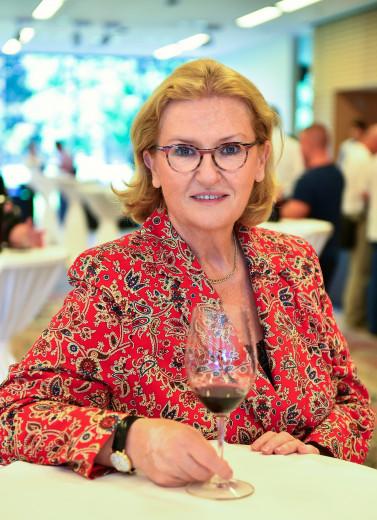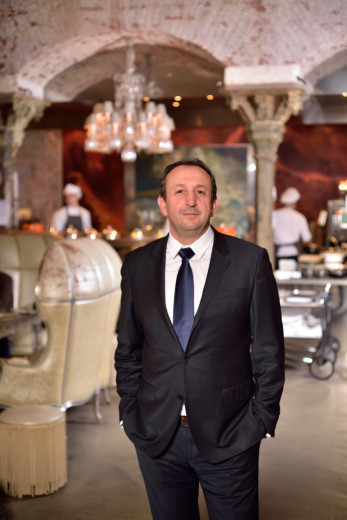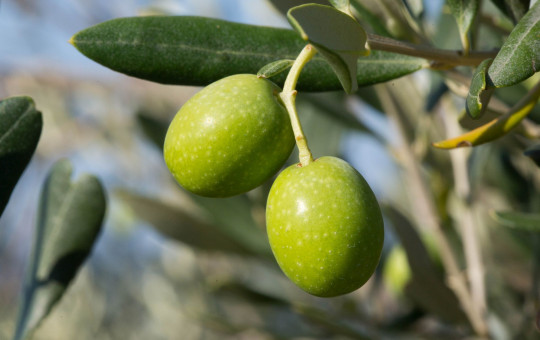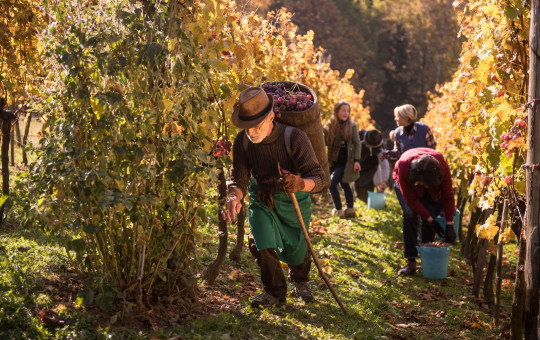Date: 18. March 2020
Time to read: 2 min
She is enthusiastic as she recounts how in recent years we have been witnessing a true renaissance in Slovenia, with talented chefs, numerous new restaurants and top wines.
Gastronomy - one of Slovenia’s key assets
A growing number of renowned chefs are putting their regions on the world map by using local ingredients in order to share the typical tastes of the local environment with their guests. In some ways this is not very difficult, stresses Mrs. Šemić, as there is no lack of top quality produce in Slovenia, with meat from free-range animals, fish from clear waters, fruits from nearby forests and locally grown vegetables.
Foreign chefs are often astonished to find out how many top chefs in Slovenia have their own vegetable gardens or gather ingredients from the forests and fields.
Here, however, it’s no secret that almost every Slovenian has a small garden to grow their own vegetables, all the more valuable because they are grown without chemicals. Gastronomy, to which Mira is passionately devoted, is thus, in her opinion, one of Slovenia’s key assets. She herself contributes to make Slovenia’s gastronomy richer with her extensive knowledge and experience as one of the greatest authorities on wine and one of the world’s top sommeliers. She loves to share her experience, and her educational programmes, the Little Wine School and Youth Wine School, are always full. She has also accumulated experience abroad. She is the only woman in the region to have graduated from the renowned London Wine and Spirit Education Trust (WSET) and obtained the tile of “Wine Academic” in Rust in Austria , in this way enhancing her third-level sommelier skills.
-
 Mira Šemić is the only woman in the region to have graduated from the renowned London Wine and Spirit Education Trust (WSET) and obtained the tile of “Wine Academic” in Rust in Austria , in this way enhancing her third-level sommelier skills. Photo: UKOM Archives
Mira Šemić is the only woman in the region to have graduated from the renowned London Wine and Spirit Education Trust (WSET) and obtained the tile of “Wine Academic” in Rust in Austria , in this way enhancing her third-level sommelier skills. Photo: UKOM Archives
-
She loves to share her experience, and her educational programmes, the Little Wine School and Youth Wine School, are always full. She has also accumulated experience abroad. Photo: UKOM Archives
Gault&Millau Culinary Guide
Thanks to Šemić, Slovenia now has its own edition of the world famous Gault&Millau Culinary Guide, first published 50 years ago and now covering 23 countries. In one year a total of 180 restaurants and inns were evaluated by Slovenian foodies, and 157 were awarded at least one chef’s hat. In addition, the Guide lists 76 popular spots (PoP), 57 wineries and 12 craft breweries, the best tourist farms and a selection of typical Slovenian food products.
The Gault&Millau Culinary Guide has thus placed Slovenia on the world gastronomy map. This edition of the Gault&Millau Culinary Guide for Slovenia is added value for the country’s tourism offer, and an excellent tool for visitors coming to Slovenia and interested in its gastronomy. The Guide confirms the uniqueness of Slovenian cuisine and the excellence of its wines, which are among the best in the world.
Jacques Bally, President of Gault&Millau International: “It’s time for the Slovenian Gault&Millau Guide to discover and support the talent from all Slovenia. Slovenia is an extremely rich country with a long culinary tradition, and this we want to show to the rest of the world. Slovenian chefs surprised us with their creativity and finesse and love of nature and its fruits.”
Service – Slovenia’s black spot
Šemić points out that there is a chronic lack of high-quality, trained staff. In workshops on quality service, she is striving to arouse interest in the hospitality industry among young people. With regret, she notes that in Slovenia the waiting profession has traditionally had a low reputation and value. This is actually very surprising, as the profession requires a large variety of skills.
A waiter must be agreeable, have a good presence, have the necessary know-how, have good manners, be well dressed and more. The waiter is a host and as such he must be able to understand the guest and feel what the guest likes or does not like, he must know what wine to pair with food, speak foreign languages, and must be accomplished and have a strong personality. Not everybody can be a waiter!
This is also the slogan under which she educates young waiters. If we liked the waiter, even if the food was not the best, we will return to the restaurant because of the waiter, their smile and their service. It is the waiter who might even resolve a difficult situation created by the chef. This is why Mrs. Šemić’s next challenge is to educate and raise awareness among young people of how important the work of waiters is.
-
“I am very passionate about food and wine. We have excellent chefs in Slovenia, we can be extremely proud of our food and wine, and we are not even aware how good the food we eat is.” Photo: UKOM Archives
-
Mrs. Šemić’s next challenge is to educate and raise awareness among young people of how important the work of waiters is. Photo: UKOM Archives
-
She is also very happy to see that the younger generation is increasingly taking an interest in cuisine in old, well-reputed restaurants and inns. Photo: UKOM Archives
Top tastes of Slovenia
Mira Šemić is proud of the unique location of our country. “Within one hour’s ride from the capital there are three regions of gastronomy, the Alps, the Mediterranean and the Karst, and Pannonian Slovenia. In terms of food and wine, they could not be more different. There is a lot to show in such a small area.”
She is also very happy to see that the younger generation is increasingly taking an interest in cuisine in old, well-reputed restaurants and inns. They travel and study abroad, and bring back new skills in a desire to preserve the Slovenian culinary tradition, while at the same time enriching and expanding it.
In 2021, Slovenia will have the title European Region of Gastronomy; this will certainly have a significant impact on the overall sustainable development of the country, including gastro-tourism and local self-sufficiency, and will further strengthen the image of Slovenia as a unique destination for gastronomy.








